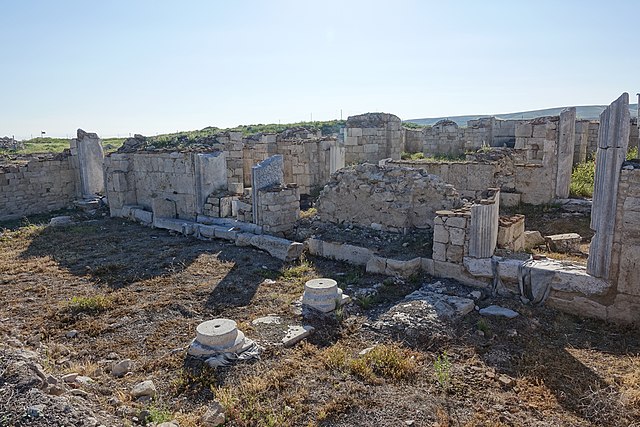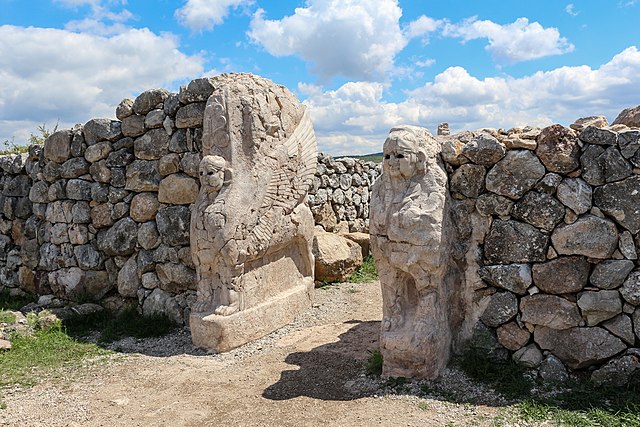Amorium, also known as Amorion, was a city in Phrygia, Asia Minor which was founded in the Hellenistic period, flourished under the Byzantine Empire, and declined after the Arab sack of 838. It was situated on the Byzantine military road from Constantinople to Cilicia. Its ruins and höyük are located under and around the modern village of Hisarköy, 13 kilometers east of the district center, Emirdağ, Afyonkarahisar Province, Turkey.
Ruins of Amorium
Gold solidus of Emperor Michael II the Amorian and his son Theophilos.
Anatolia, also known as Asia Minor, is a large peninsula located in West Asia and a region of Turkey, constituting most of its contemporary territory. Geographically, the Anatolian region is bounded by the Mediterranean Sea to the south, the Aegean Sea to the west, the Turkish Straits to the north-west, and the Black Sea to the north. The eastern and southeastern boundary is either the southeastern and eastern borders of Turkey, or an imprecise line from the Gulf of Iskenderun to the Black Sea. Topographically, the Sea of Marmara connects the Black Sea with the Aegean Sea through the Bosporus strait and the Dardanelles strait, and separates Anatolia from Thrace in the Balkan peninsula of Southeastern Europe.
The henges in Göbekli Tepe were erected as far back as 9600 BC.
The Sphinx Gate in Hattusa
The Theatre at Halicarnassus (modern Bodrum) was built in the 4th century BC by Mausolus, the Persian satrap (governor) of Caria. The Mausoleum at Halicarnassus was one of the Seven Wonders of the Ancient World.
The Library of Celsus in Ephesus was built by the Romans in 114–117. The Temple of Artemis in Ephesus, built by king Croesus of Lydia in the 6th century BC, was one of the Seven Wonders of the Ancient World.






